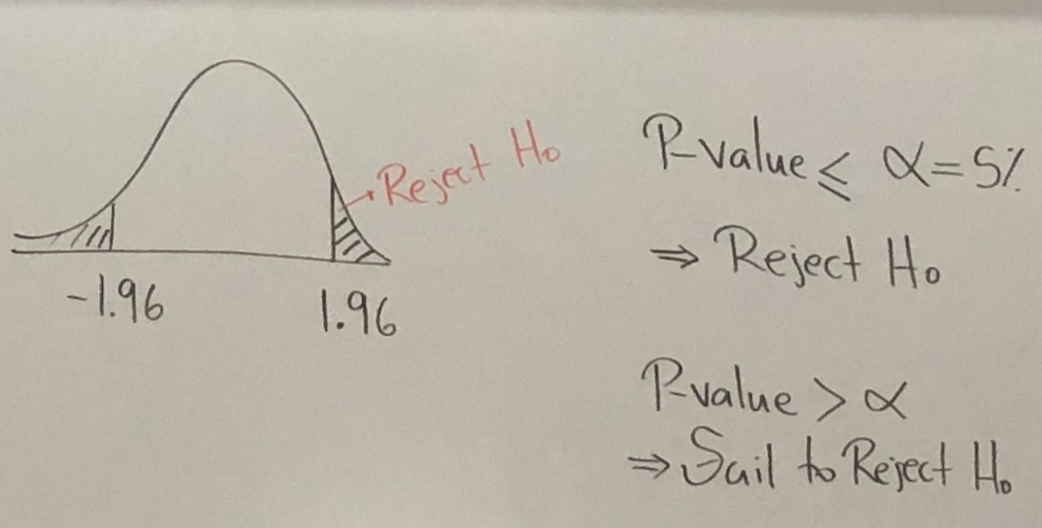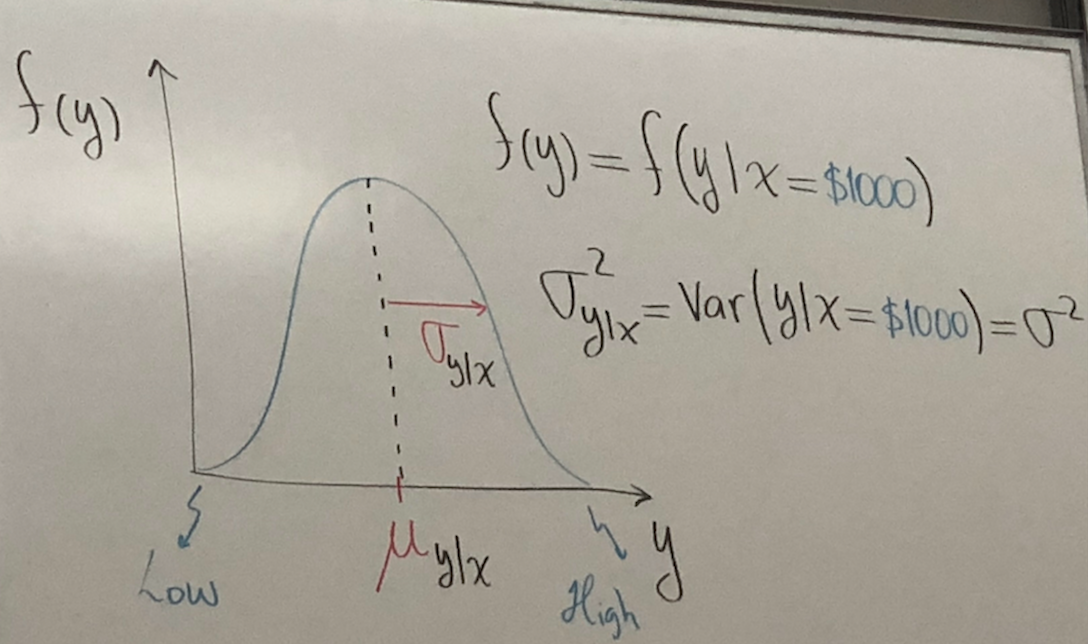
An Economic Model, are random variables:
Dependent/ Explained/ Response var
Independent/ Explanatory/ Predictor var
Example: Relation between household income and expenditure on food
→ household, food expenditure;
Assume: Y-Normal Distribution

NOTE: From f(y) we can get confidence intervals, point estimates and probabilities.
Parameters of the model: intercept, = slope =
 If the constant variance assumption holds, the data are said to be homoskedastic, otherwise, they are said to be
hetroskedastic.
If the constant variance assumption holds, the data are said to be homoskedastic, otherwise, they are said to be
hetroskedastic.
Scatter Example: X - discrete var, years with gap.
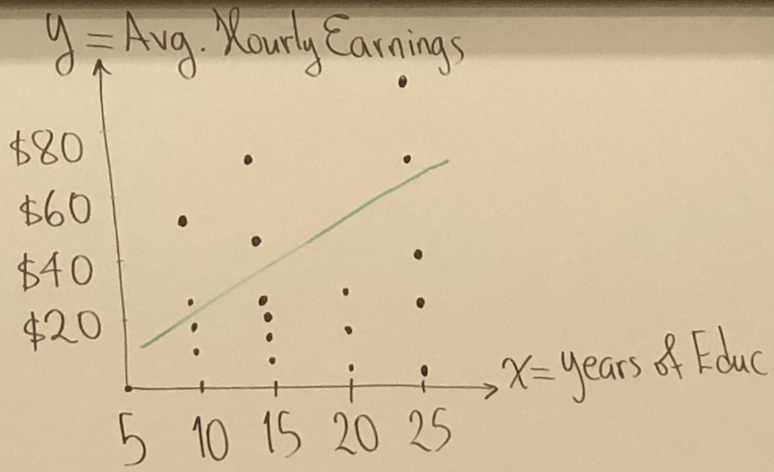
;
y - true data, - estimated value;
has no interpretation, because we do not have date for . is not realistic for model;
for each additional year of education, we expect hourly wage to increase by $1.76.
takes at least 2 different values;
values are given and are not random (fixed in repeated samples), x is not a r.v
Independence → , but ≠ Independence
Optional ~ compare:
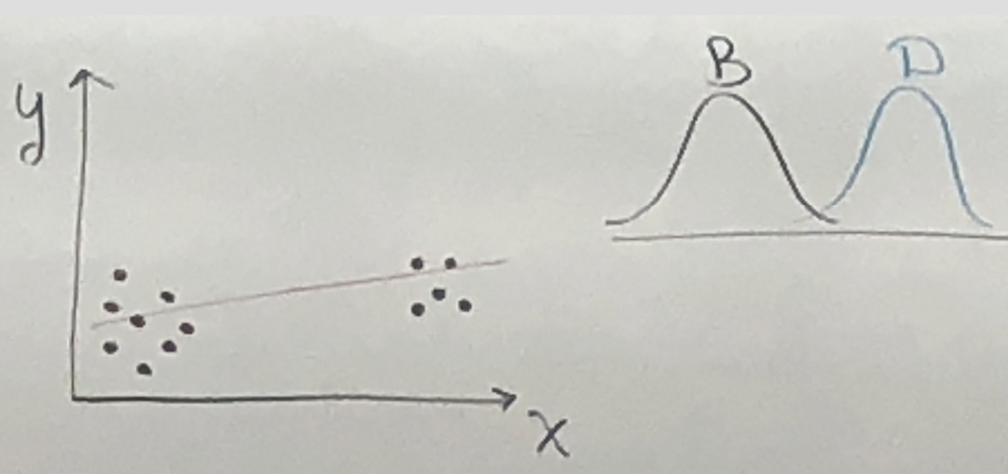
Decompose the observation y into 2 components.
= Systematic components of .
= Random Components
Data = Model + Uncertainty,
, take expected value on both side:
Notes: x is not a r.v.
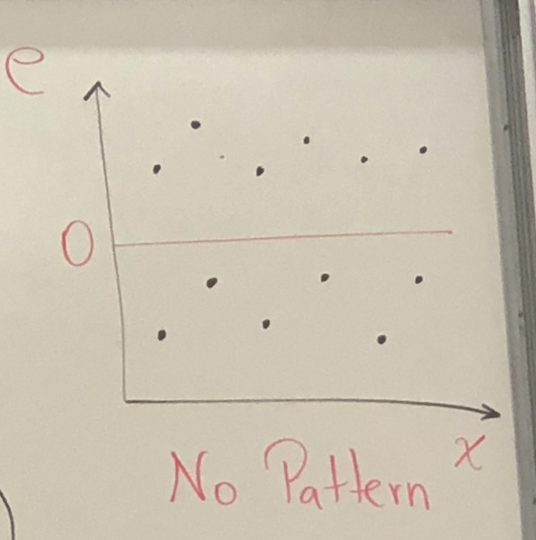
and have the same variance,
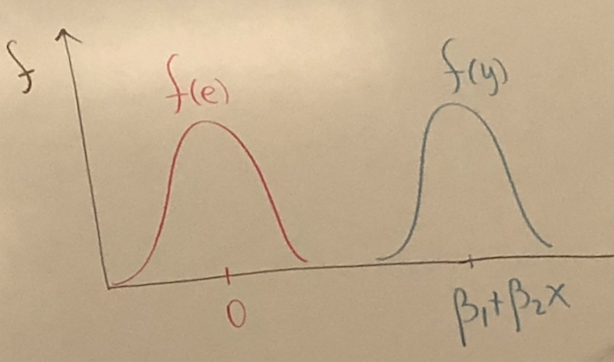
Error is the sum of distance between the data points and the Line.
Find the best fit line such that is a minimum
Result: , where LS Residuals
Let SSE(sum square error) = .
Thus, find such that is minimum
Solution(Least Square Estimators), = centroid.
Notes: avoid vertical slope, take at least 2 x value.
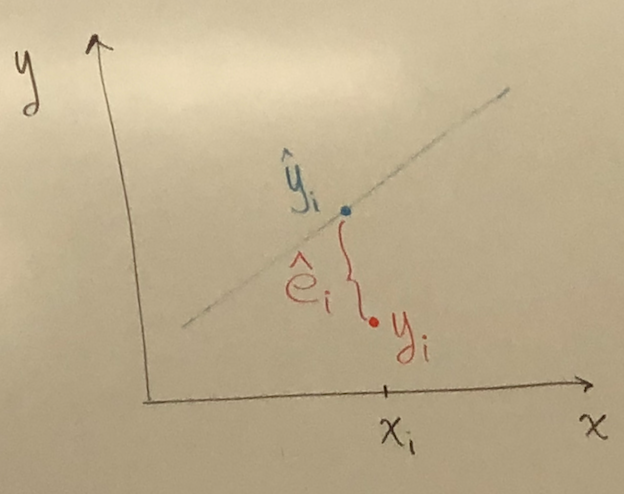
Food expenditure example, income in $100s,
Interpretation:
Slope , if weekly income increases by $10(x=1), we expect food expenditure increase by $10.21;
y-intercept , no Interpretation since
Mathematically, is computable, but is valid? Let’s say Range of x is
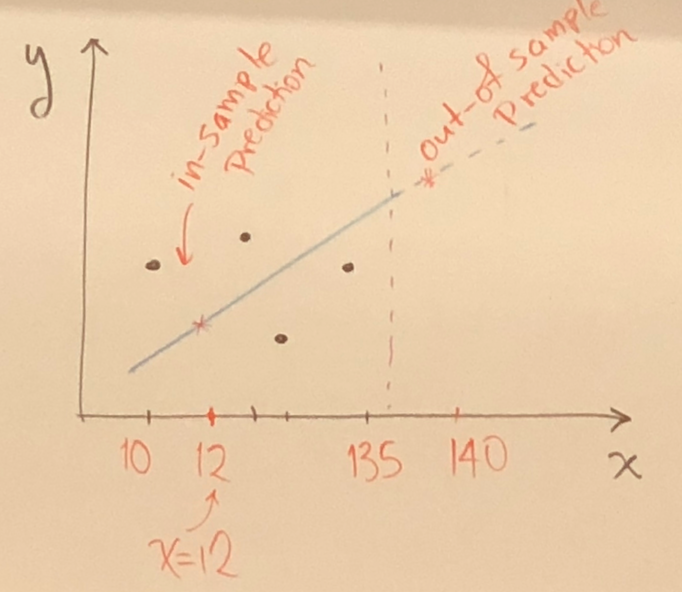
, where is the slope along a specified curve.
For the linear relationship
Error will depend on choice of , and , thus
Given a statistic model/parameter , and respective estimator
Bias of the estimator: Bias[] = E{} = -
Notes: Least Square estimators b_1, b_2 of β_1 and β_2 respectively are unbiased.
Unbiased estimator: -
biased estimator: -
Bias
, where
Notes: This applies to estimators, not our estimates.
Assuming SR1-SR5 hold, are the best linear unbiased estimators.
Unbiased estimator of the error term:
, →
for every additional year of education, we expect wages to increase by 8.3%.
Notes: β_1 > 0, and β_3 < 0, diminishing marginal effect
Slope =
Example:
Interpretation: experience has a positive effect on wages up to the turning point at 3 years.
, Standard error to and are and respectively, total numbers of observation is 526, , and
Male = y-intercept = Avg. hourly wages for men;
Female = Avg. hourly wages for women;
Is the hourly wage difference between men and women statistically significant?
Yes. , reject 0,
